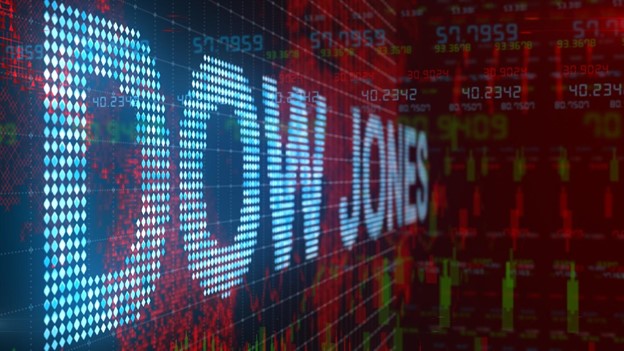Investors continue to deal with headline disruptions. Geopolitical tensions weigh on sentiment. Perhaps the bigger concern lies around monetary policy uncertainty.
Rate-sensitive markets gyrate in reaction to comments from central bank officials. This was evident last Friday when St. Louis Fed President James Bullard’s hawkish comments led markets lower. But did Bullard provide any new insight or just reiterate prior comments?
Traders need to be able to sift through headlines and understand what represents a change in direction. With a busy week of Fed speak ahead, we wanted to prepare you for potential headline noise.
On Friday, Bullard expressed an urgency about raising rates and unwinding its massive balance sheet. He favored a 50-bps hike in the March 16 meeting and four rate hikes by June. Markets sold off on the news.
Here is the rub, according to the CME’s Fed Funds Futures, a 50-bps point hike and four rate hikes by June were already priced in by markets.
CME Fed Funds Futures probability for March:

CME Fed Funds Futures probability for June:

Bullard is viewed as one of the more hawkish Fed members. The market should not have reacted as aggressively as it did. But it is good information as it highlights investor worries. Traders need to adjust risk accordingly.
This means being prepared for upcoming headlines that could disrupt trade. Once the headlines hit, market participants need to dissect what represents a meaningful change to the rate hike path. This can lead to opportunity when sentiment starts to shift.
Here are scheduled Fed speak events that could disrupt trading activity this week:
The minutes from the Fed’s January meeting will be released Wednesday afternoon at 2pm ET. Markets will sift through debates on how quickly the Fed should wind down its asset purchases, reduce its balance sheet and raise rates.
There are small nuances in Fed speak that will be monitored. The terms few, many, or most participants is a key differentiator for which side is winning the debate. When headlines cross the wires, pay attention to the number of fed members behind an action. For instance, “most participants thought the Fed should raise rates X amount of basis points” will outweigh a comment that says, “a few participants were concerned with…”.
We will recap the Fed minutes on Thursday to decipher potential changes in Fed commentary.
Bullard was back in action Monday morning, reiterating his hawkish commentary in an interview with CNBC. Mr. Bullard also talks on Thursday. The market should have fully digested his comments. Be prepared for a squeeze if shorts try to drive us down on those headlines.
The St. Louis President is not the only voting member speaking this week.
Cleveland Fed President Loretta Mester, a voting member, speaks Thursday, February 17. She spoke last Wednesday, February 9, at a European Economics and Financial Center event. Mester stated that every meeting would be ‘live’.
The regional president favored an aggressive reduction of the balance sheet. She believed the bank could start selling mortgage-backed securities. This would lead to pressure on mortgage rates, weighing on the housing sector (XHB, ITB).
Mester expects the Fed to move in the March meeting, but she did not see a compelling case for the bank to raise rates 50 bps. It would be notable if she moves off this stance and raises the possibility that the Fed could raise 50 bps.
Fed Governor Chris Waller speaks on Friday, February 18. He is another voting member. Waller last spoke on January 13. He stated that the central bank would need to act more aggressively if inflation stays high through the first half of the year. He felt it was fair to “pencil in” three rate hikes but he needed to see more inflation data. The hot January CPI number suggests the data will lead to an increase in rate expectations for Waller. The Fed Governor said if inflation remains high, it would add to the argument for four or maybe five rate hikes.
He dismissed the chance of a 50-basis point hike, noting that a larger rate increase could be disruptive to markets. He did say that a larger rate hike was a “tool” the fed could use but “it would take a lot for us to move in that direction”.
Did the January CPI number fill that criterion? We will see.
Perhaps the most interesting Fed speaker will be New York Fed President John Williams who will also speak on Friday. Mr. Williams has been, arguably, the most dovish Fed member. In his most recent remarks, he stated that it was sensible for the Fed to raise rates this year.
However, he was more circumspect with regards to growth and inflation expectations. He projected inflation to drop to 2.5% in 2022 and for a further decline to the 2% target in 2023. Williams also said that he thought growth would slow to an annual rate of 3.5% in 2022 due to the impact from the Omicron strain.
It is one thing for a hawk like Bullard to make hawkish comments. It is far more important when a dove makes hawkish comments or vice versa.
The market will continue to grapple with the Fed rate path. The Fed has clearly stated it remains data dependent. Watching the data and how it changes each Fed member’s parlance will help traders understand the direction of the rate path. Knowing what represents news and what represents a real change in Fed sentiment opens up opportunities or provides deeper insight to market fear.




